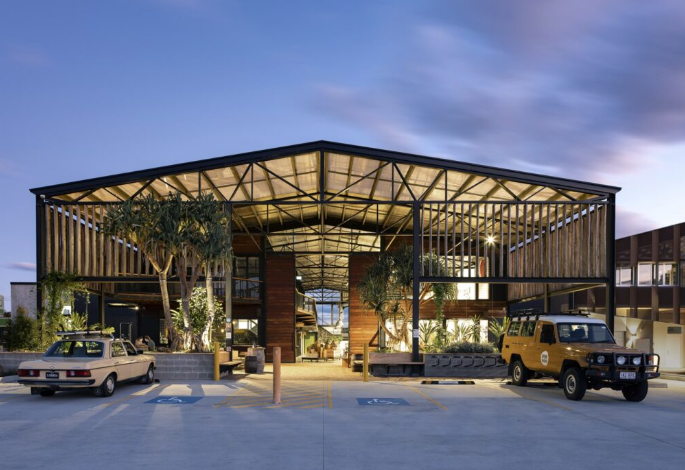Sustainability in Sydney Carpentry: Eco-Friendly Practices and Timber Sourcing

An Insight into how Sustainability in Australia Works
Sustainability in carpentry has been a growing concern in Australia for several years now.
The movement gained traction in the mid-2000s when environmental concerns and climate change began to take centre stage in public discourse.
Today, sustainable carpentry practices are increasingly common throughout the country, with many carpenters adopting eco-friendly techniques and materials in their work.
In this article, we’ll look closely at Eco-practices, Governance, What sustainable woods we have, and What Eco-traits you should look for in a carpenter for the ideal fit.
So let’s get into it.
Sourcing
One of the key areas of focus in sustainable carpentry is timber sourcing.
Many carpenters are now using timber that has been responsibly sourced from sustainably managed forests. This involves selecting timber that has been harvested using methods that minimise environmental impact and encourage forest regeneration.
In-House Eco Practices
As well as responsible timber sourcing, sustainable carpentry also involves using eco-friendly practices in the workshop.
This can include using low-emission finishes and adhesives, minimising waste through recycling and repurposing, and reducing energy consumption through the use of energy-efficient equipment and lighting.
Sustainability in carpentry has come a long way in Australia over the last decade, and it is encouraging to see so many carpenters taking steps to reduce their environmental impact and promote a more sustainable future.
What are the Governing Bodies in Australia that Oversee Sustainability?
In Australia, there are several governing bodies that oversee the sustainability of trees and forests. These bodies play an important role in promoting responsible forest management and ensuring that timber is harvested in a sustainable and ethical way.
Here are some of the key governing bodies:
Department of Agriculture, Water and the Environment
This department is responsible for managing Australia’s natural resources, including forests and woodlands. It oversees the National Forest Policy Statement, which outlines the government’s approach to sustainable forest management.
Forest Stewardship Council (FSC)
The FSC is an international non-profit organisation that promotes responsible forest management. It operates a certification program that verifies that timber products have been harvested from well-managed forests.
Australian Forest Products Association (AFPA)
The AFPA is the peak industry body for the forest and wood products sector in Australia. It works to promote sustainable forest management practices and advocates for the industry’s interests at the national and international levels.
Timber Development Association (TDA)
The TDA is a non-profit organisation that promotes the use of timber in construction and design. It works to ensure that timber is sourced sustainably and that its use is environmentally responsible.
Responsible Wood
This is an Australian certification scheme that verifies that timber products have been sourced from sustainably managed forests. The Programme endorses it for the Endorsement of Forest Certification (PEFC), an international organisation that promotes responsible forest management.
These are just a few examples of the governing bodies in Australia that oversee the sustainability of trees and forests.
By working with certified and responsible suppliers, carpenters can help ensure that their work is environmentally sustainable and socially responsible, so why not confirm with them where they get their wood from or what governing body monitors them?
Sustainable Woods in Australia
Australia is home to a diverse range of sustainable woods that are commonly used in carpentry and woodworking. Here are some of the most well-known and popular sustainable woods in Australia:
- Blackbutt: This is a termite-resistant hardwood that is commonly used in outdoor decking and furniture. It is a popular choice because of its durability and attractive grain patterns.
- Spotted Gum: A popular hardwood that is commonly used in outdoor decking and furniture. It is highly resistant to rot and termites, making it a great choice for outdoor applications.
- Jarrah: Another popular hardwood that is known for its rich red colour and durability. It is commonly used in flooring, furniture, and decorative applications.
- Tasmanian Oak: This is a sustainably harvested hardwood that is commonly used in furniture and cabinetry. It has a light, natural colour and a straight grain pattern.
- Western Red Cedar: Here, we have a softwood that is commonly used in exterior applications, such as cladding and decking. It is known for its attractive colour and natural resistance to decay and insects.
- Cypress Pine: This is another softwood that is commonly used in fencing, decking, and outdoor furniture. It is highly resistant to decay and termites, making it a popular choice for outdoor applications.
These are just a few examples of the many sustainable woods that are available in Australia.
Be sure to make a note of these trees when looking for carpentry in Sydney, as it is important everyone is on the same page.
What Eco-Freindly Traits to Look for When Hiring Carpenters in Sydney.
When hiring carpenters in Sydney, there are several eco-friendly traits that should be on your mind.
Let’s take a look at the basics:
Use of Sustainably Sourced Materials
Look for carpenters who use sustainably sourced wood and other materials in their work. This can minimise the environmental impact of your project and promote responsible forest management.
Use of Low-emission Finishes and Adhesives
Carpentry projects often involve the use of paints, stains, and adhesives, which can release harmful chemicals into the air. Look for carpenters who use low-emission or non-toxic materials to minimise indoor air pollution.
Waste Reduction and Recycling
Look for carpenters who prioritise waste reduction and recycling. This can involve using scrap wood for other projects, recycling or repurposing materials, and minimising the amount of waste sent to landfills.
Energy-efficient Practices
Look for carpenters who use energy-efficient equipment and lighting in their workshops. This can help reduce energy consumption and lower your carbon footprint.
Knowledge of Sustainable Practices
Look for carpenters who are knowledgeable about sustainable carpentry practices and techniques. They should be able to provide guidance and recommendations on how to make your project more eco-friendly.
Try to use these last two paragraphs as a rule of thumb or basic guide when engaging with a carpenter; you want to get it done right in more ways than one!
SUMMARY
By choosing a carpenter in Sydney who prioritises eco-friendly practices, you can help reduce the environmental impact of your project and promote sustainability in the carpentry industry. By ensuring you stick to the trees named in this article, you’ll know full well that the wood will be sustainably replaced and, therefore, just concentrate on the best look and designs you can and make it a project to remember.





